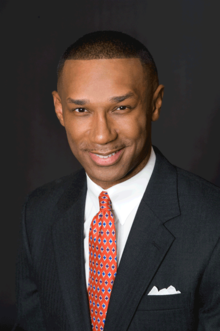People hate it when other people cough or sneeze near them. The reason is simple. We don’t want to catch whatever you have!
We’re quick to say “no” to other people’s physical maladies. We’re much less quick to say no to what researchers have labeled emotional contagion.
What is emotional contagion? It’s the phenomenon of having one person’s emotions and related behaviors directly trigger similar emotions and behaviors in other people. Studies show we pick up cognitive baggage from others without even knowing it — both the positive and negative variety.
People routinely “catch” each other’s feelings when working together in groups. It’s not surprising that this influences your employees’ moods. What’s more surprising is that it significantly influences their judgment and business decisions as well, usually without anyone having a clue about what’s going on.
One area that’s routinely viewed as a negative form of emotional contagion is employee turnover. You know the drill. Someone announces they are leaving and all of a sudden there’s a rush to the door. People ask, “What’s wrong?” and “Should I be moving on too?” This is never more noticeable than in our current peak economic cycle.
Bringing is us back to: Is turnover contagious?
Of course it is. But instead of viewing it as a bad thing, let’s view this organizational form of a head cold as an opportunity. Here are five reasons why emotional contagion in the form of turnover (or employees thinking about leaving) is a good thing for your company and your team of managers:
- A single employee announcing their intent to leave causes you to take stock of your team. If you believe turnover is contagious, then you surely are taking stock of who might be next to be on the market. Taking stock is good; it forces you to stack rank those on your team.
- Taking stock of your team allows you to think about your salary cap. In sports, a salary cap is the maximum amount of money a team can spend on players. You have a cap as well. It’s called your salary budget. Taking stock of your team when someone announces they are leaving causes you to consider different ways to allocate money to those who remain, and that’s healthy.
- Some people may need to leave, but contagious turnover is not kind. Let’s face it: If you have 10 people on your team and one leaves, everyone gets a bit of the emotional contagion of contagious turnover. Too bad the ones you’d like to see leave are immune to coming down with the turnover bug. Turnover forces you to think about who you’d like to see leave, but you understand that they probably won’t.
- The threat of contagious turnover should cause you to do the reorg you’ve been thinking about. Note that I spelled reorg with a small “r,” because I’m not talking about layoffs, I’m talking about a refresh of responsibilities and who does what as a part of your team. Sometimes a refresh of work is all that’s required to get people through the head cold that is contagious turnover. Think of this as a team shot of vitamin C that you administer when you hear the first sneeze.
- Turnover is a call for you to talk to the people who matter most on your team. Should you talk to everyone? Sure, but a lot those folks can be covered in a group setting talking about the change. For your highest performers, the people you can’t live without, you need to have a one on one, address the turnover and rapidly move to talking about them. Give them new assignments and money if you are so moved to make them feel the love.
Did someone mention money? As a manager of people, salary compression, inequality and other bad things are present in every organization to some degree. Those confounding variables often conspire when turnover happens to limit your ability to use money as a tool to stop the bleeding.
My experience is that money as a tool is more available when turnover is a problem than most managers think. For best results, make addressing compression and inequality part of the plan related to how you want to use money to solidify your team in an environment suddenly riddled with turnover.
Turnover is contagious. But turnover is also a gift, a call to action for you to wake up as a manager and start moving cheese, money and other items to interrupt the pattern and avoid being the victim.
Feed the cold and starve the fever, people.



















